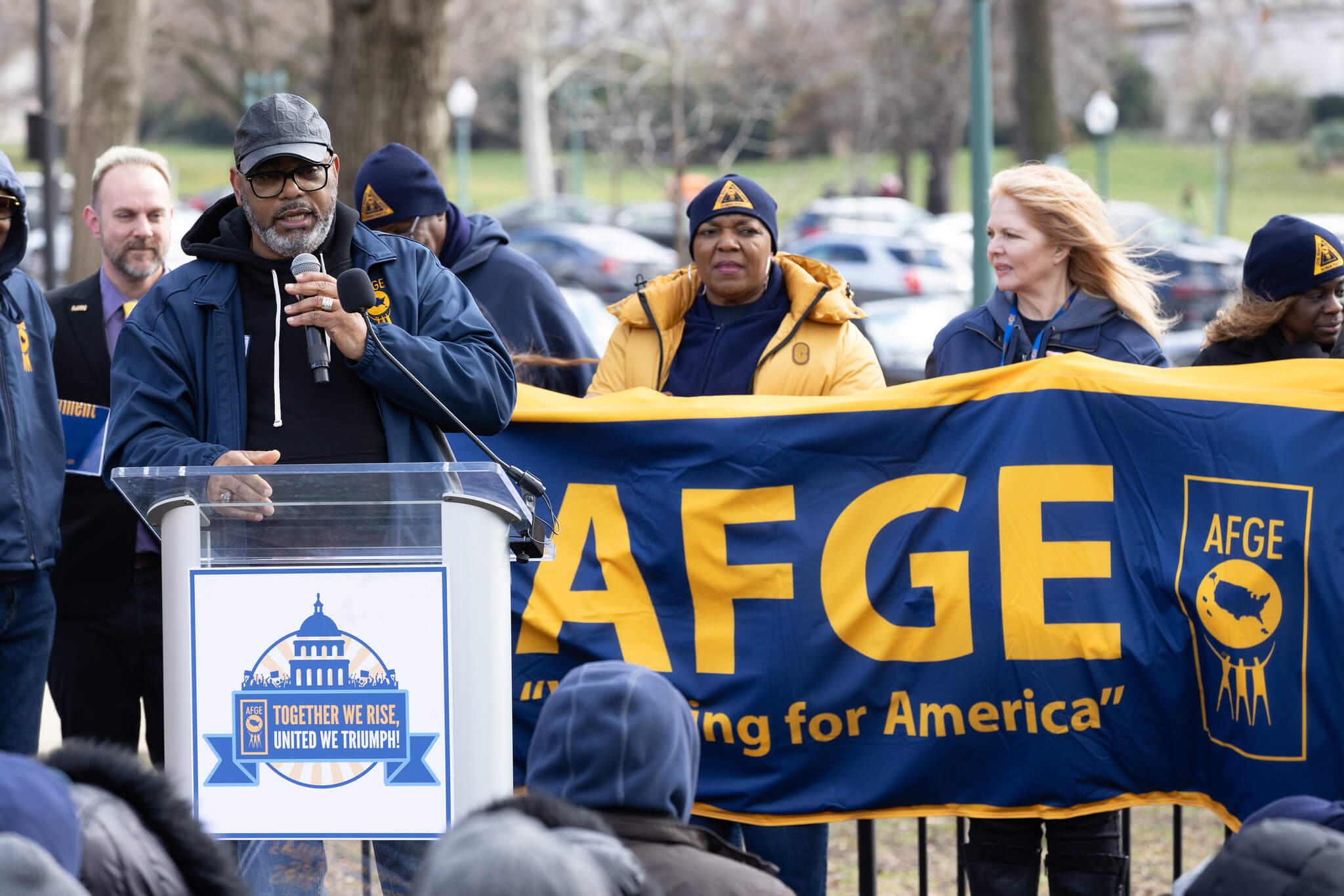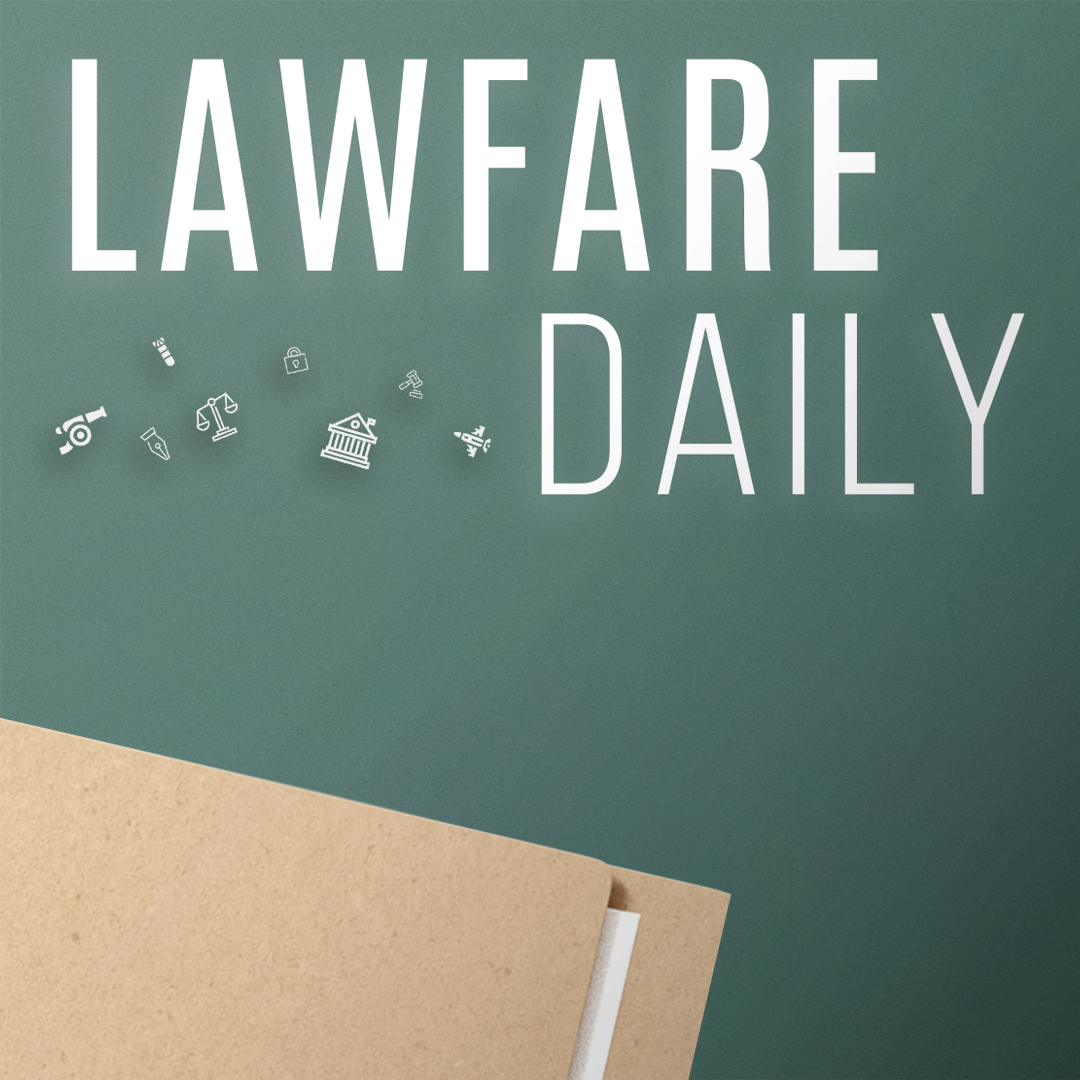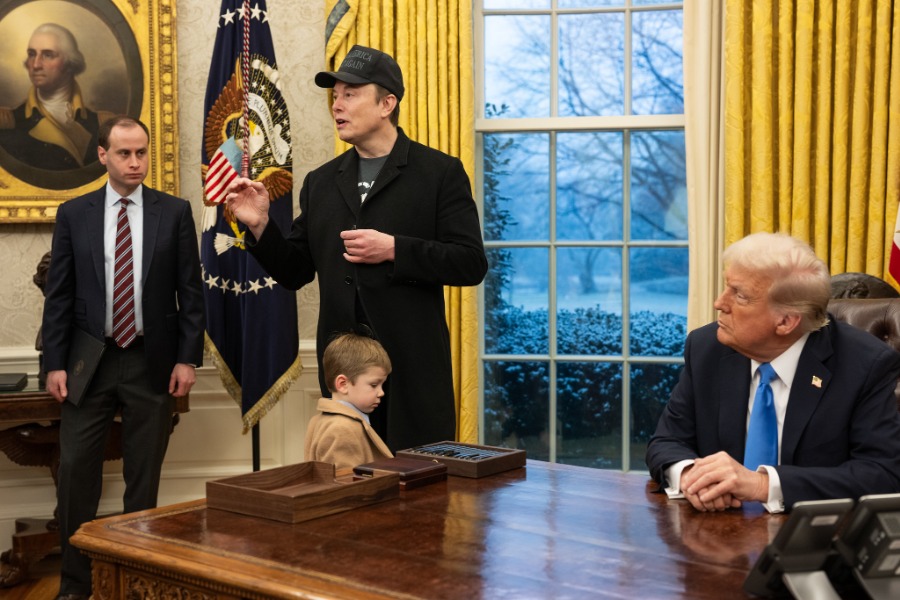Unpacking Trump’s Attack on Federal Sector Unions
The president’s efforts to decimate civil servant unions rest on a legally dubious argument.

Published by The Lawfare Institute
in Cooperation With

On March 28, President Trump issued an executive order purporting to bar federal workers at dozens of federal agencies and subdivisions from joining labor unions or entering into collective bargaining agreements (CBAs) with the federal government. Initial reporting suggests that the order could strip two-thirds of unionized federal workforce, or nearly 700,000 civil servants, of their collective bargaining rights. Following the issuance of the order, the Office of Personnel Management (OPM) issued a memorandum directing the named agencies to implement the president’s directive, which presumably will include the termination of any collective bargaining agreements and a refusal to recognize existing unions. If it is upheld, Trump’s order would devastate federal unions, stripping the two largest—the American Federation of Government Employees (AFGE) and the National Treasury Employees Union (NTEU)—of the vast majority of their dues-paying members.
Under the 1978 Civil Service Reform Act (CSRA), most federal employees are entitled to join unions and to bargain over the “conditions of [their] employment.” But the CSRA contains a provision (5 U.S.C. § 7103(b))—which President Trump has invoked—that allows the president to exempt certain employees from labor rights in order to protect national security. A fact sheet accompanying the order asserts that these exemptions are necessary to “ensure that agencies vital to national security can execute their missions without delay and protect the American people.”
The order was immediately confronted with legal challenges. At the same time the executive order was released, the administration filed a suit in the U.S. District Court for the Eastern District of Kentucky seeking a declaratory judgment that the president is within his statutory authority to exempt broad swathes of the federal workforce from collective bargaining. On March 31, one of the nation’s largest unions of federal sector employees, the NTEU, filed suit in the D.C. district court seeking to enjoin Trump’s order from taking effect and a declaratory judgment that the order is unlawful. On Friday, April 25, the D.C. district court issued a preliminary injunction prohibiting the government from implementing key provisions of the executive order until the issues can be more fully litigated.
Below, I explain the stakes of this dispute and the legal issues that are likely to arise as the parties litigate the order.
Background
Federal sector unions represent over 1.2 million federal civil servants in a wide variety of roles, from federal prison guards, to Environmental Protection Agency (EPA) scientists, to administrative law judges at agencies like the Social Security Administration. While separate civil service laws and regulations govern the process for hiring, firing, and demoting federal workers, labor rights govern many other aspects of civil servants’ work.
Civil servants’ labor rights can serve as an important check on the president’s power to manage the executive branch and influence the operation of key agencies. Labor rights can limit agency management’s tools for controlling how civil servants make decisions (for example, by negotiating how performance evaluations and disciplinary proceedings work). They can constrain policy choices—for example, the EPA’s union recently negotiated a contract that includes protections for “scientific integrity”—limiting the president’s ability to interfere in scientific judgments. They can dictate rights around working conditions, affecting whether President Trump can make good on his threats to call remote workers back to the office or relocate whole agencies. Perhaps most important, unions pool money and expertise, allowing federal workers to push back against presidential attacks through litigation, mass communication strategies, and legislative outreach.
All of this is at odds with the Trump administration’s expansive view of executive power, which insists that many restraints on the president’s ability to manage the executive branch—including aspects of federal sector labor law—are illegitimate. In his first term, President Trump rolled out a range of aggressive policies to limit the power of unions, many of which upended decades of labor precedent. For example, he issued executive orders restricting the time and resources civil servants could use on union matters and prohibiting agencies from bargaining with unions on a range of non-mandatory subjects; he appointed labor skeptics to key Federal Labor Relations Authority (FLRA) posts; and he attempted to rescind certain CBAs and revoke the certification of some federal unions. But those efforts were met with mixed success: Some were thwarted by courts, and others were subsequently rolled back by the Biden administration.
Given the resilience shown by federal unions, the president has apparently decided to take a more aggressive approach during his second term. The current executive order dispenses with many of the incremental tactics Trump relied on in his first term to push back against unions. Rather than rescinding specific CBA provisions or litigating before the FLRA to limit the scope of union representation, the administration has gone straight for the jugular—seeking to strip much of the federal workforce of union representation entirely.
What Law Governs Exemptions From Labor Rights?
The president’s power to exclude certain employees from labor protections is not open ended. Rather, specific criteria need to be satisfied under the relevant section of the CSRA, 5 U.S.C. § 7013(b). The statute provides that the president may exclude “any agency or subdivision thereof” from labor protections only if the following two criteria are met: (a) “the agency or subdivision has as a primary function intelligence, counterintelligence, investigative, or national security work” and (b) “the provisions of this chapter cannot be applied to that agency or subdivision in a manner consistent with national security requirements and considerations.”
The power to exclude civil servants under this provision has not been invoked often. President Carter issued Executive Order 12171 shortly after the CSRA was enacted in 1979, denying bargaining rights to the Secret Service, the Drug Enforcement Administration, and a number of subdivisions within the Department of Defense. Shortly after the Sept. 11, 2001, terrorist attacks, President George W. Bush issued Executive Order 13252, exempting U.S. attorneys and certain law enforcement-related subdivisions of the Department of Justice from labor protections. And presidents have exempted small groups of employees in other contexts. But the power has never been invoked on such a sweeping scale before.
Presidents have other, more targeted ways of pushing back on union demands beyond the nuclear option of denying representation altogether. For example, they can challenge specific union demands as infringing on their protected management rights; they can refuse to bargain over certain issues; and they can staff FLRA positions with loyalists. In fact, many of the most prominent agencies involved in national security and intelligence, such as the FBI, the CIA, and the National Security Agency, are already prohibited from unionizing under a separate provision of the CSRA, Section 7103(a)(3).
Case law interpreting this provision is limited, but precedent suggests that the president has fairly wide (yet not unlimited) discretion to exclude unions on national security grounds. The leading case is AFGE v. Reagan. In Executive Order 12559, President Reagan invoked Section 7103(b) to exempt certain subdivisions of the U.S. Marshals Service from labor protections, including the Office of Special Operations, the Threat Analysis Group, the Court Security Division, and the Witness Security Division, among others. The district court initially invalidated the order, holding that the president had not included sufficient findings of fact to justify his exclusion of the marshals. The D.C. Circuit, however, reversed the lower court’s ruling. It held that the president could not be required to find specific facts to justify his order and that his decision exempting the marshals from labor protections was entitled to a “presumption of regularity.” The court’s review of the president’s decision was thus less demanding than, for example, a review of agency action under the Administrative Procedure Act.
But, while the court’s review was deferential, it did not suggest that such exemptions were immune from scrutiny. Instead, it concluded that the appellate record provided no basis for questioning the president’s decision. The executive order had “cited accurately the statutory source of authority” for exempting the targeted divisions (which did appear to serve genuine “investigative” and “intelligence” functions). Moreover, the union in its filings had not “suggested any actual irregularity in the President's factfinding process or activity.” Given the apparent applicability of the statute, and the lack of any irregular conduct by the president, the court found the “presumption of regularity” justified.
Implications for the Current Order
President Trump’s order raises two legal questions: first, whether the issue will ever be litigated before a federal court, and second, whether unions are likely to win on the merits.
Procedurally, the case could face bottlenecks. While both the NTEU and the administration have filed lawsuits seeking declaratory judgments on the legality of the administration’s orders, those lawsuits could hit a jurisdictional snag. Technically, any dispute over the construction of the labor provisions of the CSRA is required to proceed before the FLRA before it can be heard by a federal court. If a labor suit is filed in federal court before the parties have exhausted their administrative remedies, it should be dismissed for lack of subject matter jurisdiction. Indeed, the U.S. Court of Appeals for the D.C. Circuit dismissed challenges to executive orders interpreting the labor provisions of the CSRA for lack of jurisdiction during the first Trump administration (e.g., American Federation of Government Employees, AFL-CIO v. Trump). And other lawsuits challenging the administration’s attacks on the civil service have likewise been dismissed for lack of standing by federal district courts in recent weeks.
Here, both parties appear to have ignored that requirement and gone straight to federal court. One reason might be because any litigation before the FLRA is likely to stall indefinitely. Under normal circumstances, the case would proceed as follows: The president issues an executive order stripping the unions of their collective bargaining rights; the agencies, acting on OPM’s guidance, then unilaterally cancel those CBAs. The unions protest, because it is a violation of federal law for an agency to unilaterally cancel a CBA, and file an unfair labor practice (ULP) complaint before the authority’s general counsel. The general counsel investigates and, if she finds the ULP meritorious, brings a complaint before an administrative law judge. Any decision by the judge would then be appealable to the FLRA, and from there to federal court.
But that procedural pathway for litigating the dispute is closed at the moment. The general counsel post at the FLRA is currently vacant. And because only the general counsel can prosecute unfair labor practice complaints, such complaints will be stuck in limbo until someone occupies the post. That can lead to delays of months or years. Theoretically, that means that the parties here might need to wait to litigate the legality of this order, leaving the unionization status of hundreds of thousands of workers up in the air indefinitely. That may explain why both parties have sought immediate resolution in federal court: Neither wants to wait that long to resolve such a high-stakes issue. Nonetheless, the grounds for making an end run around agency exhaustion requirements are very narrow. Where, as here, the parties’ claims are “of the type Congress intended to be reviewed” by the FLRA, courts often hold that they cannot hear the case before the agency does. So far, at least, neither court appears to have questioned its jurisdiction to hear these cases. But whether a court can hear a particular type of case (that is, whether it has “subject matter jurisdiction”) is an issue that can be revisited at any point in the case.
Assuming a federal court does reach the merits of the suits, the unions face a tough battle given the discretion usually afforded to the president. Nonetheless, they have plausible arguments that the two requirements under Section 7103(b)—that the exempted agency have a “primary” national security mission and that collective bargaining rights cannot be applied without unduly compromising national security—have not been satisfied for many of the agencies and workers targeted by the order.
First, many of the targeted agencies do not appear to play any meaningful role in intelligence or national security work, let alone engage in that work as a “primary function.” For instance, the order exempts the entire workforce of the EPA, which makes and enforces rules regarding environmental protection, and the Veterans Administration, which operates a network of hospitals and a system of benefits on behalf of the nation’s veterans. Moreover, the president’s own fact sheet suggests that the order may have motivations other than protecting national security. For instance, it notes that “[c]ertain Federal unions have declared war on President Trump’s agenda” and that the targeted unions have “widely fil[ed] grievances to block Trump policies.” Whatever the merits of these criticisms, they appear to reflect a general frustration with union-imposed roadblocks to the president’s goals. They do not necessarily relate to intelligence or national security concerns. In the Reagan case, the court left open the possibility of more searching review where the record suggested that the “President was indifferent to the purposes and requirements of the Act, or acted deliberately in contravention of them.” Those are precisely the claims the unions rely on in their complaint.
In addition, the unions could argue that, contrary to the requirement of Section 7103(b), collective bargaining rights can “be applied to” the targeted agencies “in a manner consistent with national security requirements and considerations.” Indeed, all of these agencies have been engaged in collective bargaining for decades, under presidents of both parties, without any apparent interference with national security. It is possible that in some cases the agencies’ missions or priorities have changed such that they are now more central to national security than they used to be. For instance, the list of targeted agencies includes Immigration and Customs Enforcement (ICE), which is poised to play an important role in the administration’s border security policy. The administration’s fact sheet, among other examples, notes that ICE’s CBA has created roadblocks to amending the agency’s cybersecurity policy. But it is less apparent why other agencies, like the Veterans Administration or the Food and Drug Administration, cannot continue under their existing contracts without impairing national security.
***
Unions have been among the most active and effective institutions in responding to the Trump administration’s novel invocations of executive power. The current order, if sustained, would decimate the federal labor sector, rendering collective bargaining inapplicable to the vast majority of federal workers. That move, combined with the administration’s other attacks on the civil service, would leave the federal workforce in its weakest position in a century. The outcome of this litigation could thus have far-reaching implications for the independence of the civil service and the scope of the president’s power to control executive branch operations.

.jpg?sfvrsn=c5df8bea_3)



